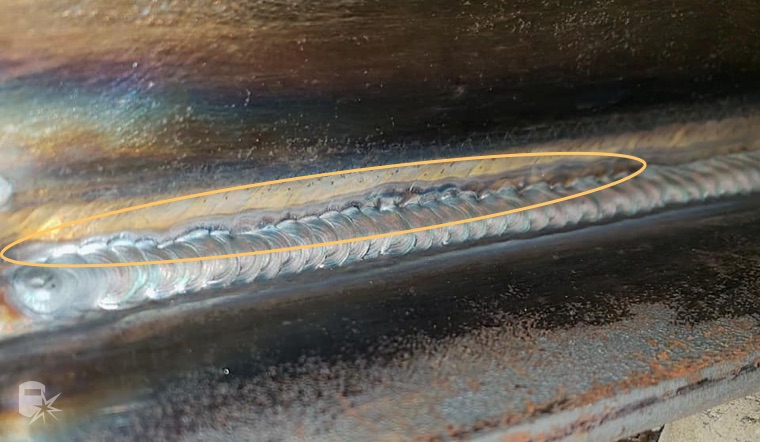Grasping the Art of Welding: Exactly How to Prevent Undercut Welding Issues for Flawless Construction Results
Efficiency and accuracy are paramount in the world of welding, where also the slightest flaw can endanger the architectural stability of a fabricated piece. One usual difficulty that welders face is damaging, a flaw that can lead and damage a weld joint to pricey rework. By recognizing the origin of undercut welding and carrying out reliable techniques to avoid it, welders can boost their craft to brand-new levels of quality (Preventing weld undercut). In the quest of remarkable manufacture results, mastering the art of welding to stay clear of undercut problems is not simply an ability however a necessity for those pursuing perfection in their work.
Comprehending Undercut Welding

To avoid undercut welding, welders should make sure correct welding parameters, such as adjusting the existing, voltage, travel rate, and maintaining the appropriate electrode angle. Furthermore, using the ideal welding strategy for the details joint arrangement is necessary. Employing weaving activities or backstepping techniques can aid make sure correct weld metal deposition and lower the probability of undercut development. Regular evaluation of welds throughout and after the welding procedure is additionally important to capture any type of undercut very early and make essential changes to avoid additional problems. Preventing weld undercut. By understanding the root causes of undercut welding and carrying out precautionary procedures, welders can attain premium, structurally sound welds.
Sources Of Undercut in Welding
Understanding the aspects that contribute to damage in welding is vital for welders to produce premium, structurally sound welds. Undercutting occurs when the weld metal does not properly fill the groove formed between the base steel and the previously transferred weld metal. Several factors can result in damage in welding. One typical reason is too much warmth input. Welding at high temperatures for extended periods can result in the base metal melting greater than wanted, causing undercut. Inadequate welding current or incorrect welding speed can likewise add to undercut. Inadequate current may not give enough warmth to thaw the base and filler steels sufficiently, while excessive speed can protect against appropriate combination, triggering undercut. In addition, improper electrode angles or inaccurate torch adjustment techniques can produce areas of reduced weld metal deposition, advertising undercut. Recognizing these causes and carrying out appropriate welding techniques can help stop undercutting concerns, ensuring durable and strong welds.
Strategies to Protect Against Undercutting

To reduce the danger of undercutting in welding, welders can utilize critical welding methods aimed at boosting the top quality and stability of the weld joints. In addition, using the correct welding strategy for the certain joint configuration, such as weave or stringer grains, can add to lowering damaging.
Furthermore, correct joint prep work, consisting of making sure tidy base products without pollutants and utilizing the appropriate welding consumables, is important in protecting against undercut issues. Using back-step welding techniques and regulating the weld bead profile can likewise aid disperse heat evenly and minimize the risk of undercut. Normal evaluation of the weld joint throughout and after welding, in addition to executing top quality assurance steps, can help in detecting and addressing undercutting concerns quickly. By carrying out these methods carefully, welders can achieve perfect manufacture results with marginal undercut defects.
Significance of Correct Welding Specifications
Selecting and preserving ideal welding criteria is essential for accomplishing effective welds with marginal problems. Welding parameters refer to variables such as voltage, present, travel rate, electrode angle, and securing gas flow rate that straight impact the welding process. These criteria should be very carefully adjusted based upon the kind of product being bonded, its density, and the welding technique utilized.
Correct welding criteria make sure the correct amount of warmth is applied to pop over to these guys melt the base steels and filler material consistently. If the parameters are established too expensive, it can result in extreme warmth input, creating spatter, burn-through, or distortion. On the other hand, if the criteria are as well low, incomplete blend, lack of infiltration, or undercutting may occur.
Quality Assurance in Welding Workflow

Conclusion
Finally, grasping the art of welding needs a complete understanding of undercut welding, its Visit Website causes, and techniques to avoid it. By making sure correct welding criteria and implementing quality control practices, perfect construction results can be accomplished. It is essential for welders to consistently aim for quality in their welding operations to prevent undercut her explanation concerns and produce high-grade welds.
Undercut welding, an usual defect in welding procedures, takes place when the weld steel doesn't effectively load the groove and leaves a groove or anxiety along the welded joint.To stop undercut welding, welders ought to guarantee appropriate welding specifications, such as readjusting the current, voltage, traveling rate, and keeping the proper electrode angle. Poor welding existing or wrong welding rate can likewise contribute to damage.To alleviate the threat of damaging in welding, welders can use tactical welding techniques intended at boosting the quality and honesty of the weld joints.In conclusion, understanding the art of welding requires a thorough understanding of undercut welding, its reasons, and strategies to stop it.